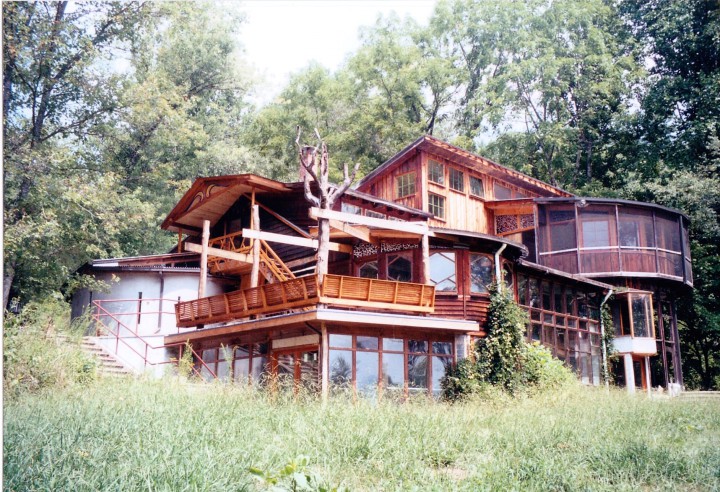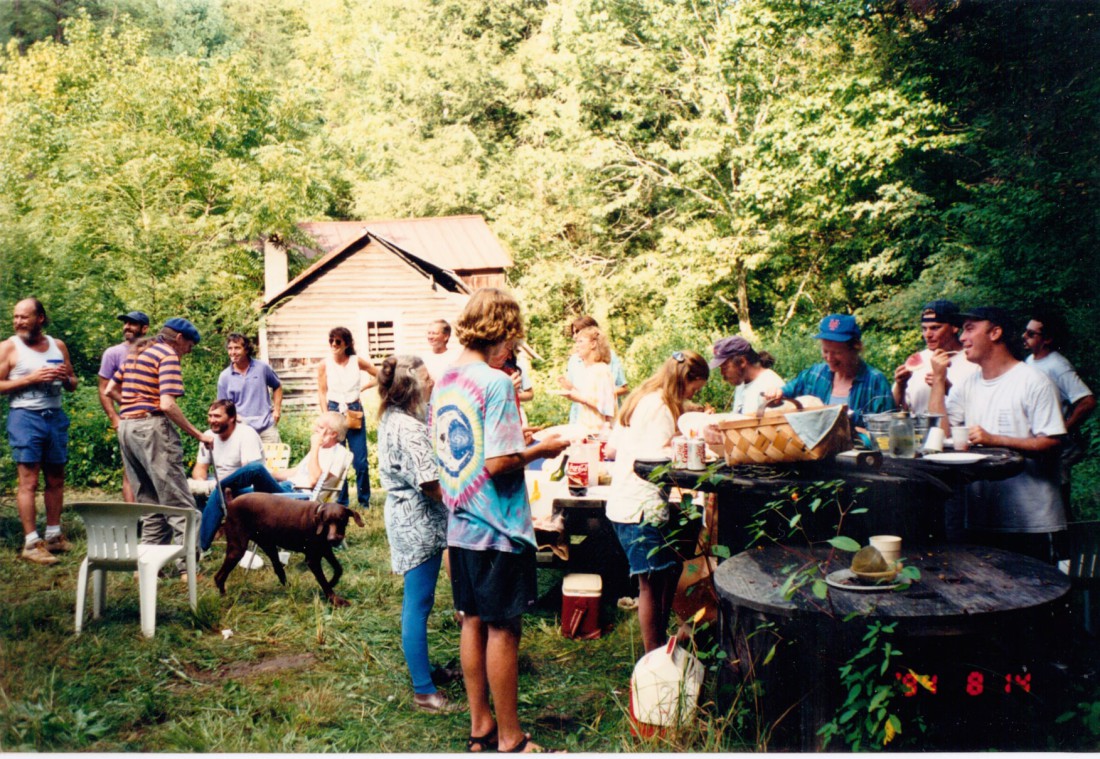Bluff Mountain has a secret. It’s not a timeworn folktale, up-and-coming eatery or elusive watering hole. Rather, hidden in Madison County’s hills is an artistic mecca — a place where community and creativity find common ground. That place is called Azule.
“Azule is where people can have time to themselves, away from the demands of life. It’s where people can follow the direction of their heart,” says Camille Shafer. A French-born artist, Shafer officially founded the gathering space-turned-nonprofit in 2010. Since then, Azule has hosted close to 300 artists-in-residence, including the likes of Shane Wilson, author of The Smoke in His Eyes, and Continental Breakfast, a Colorado-based punk-rock band.
Today, Azule is experiencing considerable growth, even overseeing a $25,000 capital campaign to build more studio space. Still, Shafer keeps close to the organization’s 45-year-old roots.
Laying a foundation
As a young artist, Shafer uprooted her life in France to teach at a Canadian high school. “I was filled with angst at the time,” she says. “And I didn’t want to teach in Paris.”
Not a fan of the frigid climate — “I worked at the northernmost high school in Quebec” — she soon relocated to Erie, Mich., only to pack her things into a van and travel the country for nine months. She continued her cross-country wandering with her husband, David Shafer, eventually settling in Hot Springs, where they purchased 35 acres and a cabin. They spent the next decade, from 1972 to the mid-’80s, growing tobacco and raising animals — “four cows, three goats, 20 sheep, a few chickens and rabbits,” says Shafer.
Despite becoming self-sufficient, community underscored all aspects of life.
“From its earliest days, even before it took its more-or-less permanent form as a 501(c)(3), Azule was integral to the Shelton Laurel and Bluff communities it existed in,” says the organization’s coordinator, Alicia Araya. “Camille and Dave opened up their growing home to the local community by organizing weekly volleyball games, quilting meetups and pingpong tournaments. They also filled a direct need when they developed a food co-op at a time when residents had to drive to Marshall for basic groceries.”
Shafer says she found her way in those nascent years: “I knew I wasn’t alone. It wasn’t just me doing this.”
Still, she wanted more. With few area hotels, many of her friends would stay in her home when they visited. They all got to talking one evening and agreed that there needed to be a place in Madison County where artists could work, “a place where people could do crafts and renew themselves,” says Shafer.
Today Azule provides space for artists to retreat and explore.
According to Araya, residencies span anywhere from four days to four weeks, with most culminating in a public exhibition of sorts. Andrea Morganstern, a painter based in Florida and New York City, completed a weeklong residency last September. She spent mornings in the studios, breaking in the afternoon for a trip to Max Patch or a hike on Laurel River Trail, a 3.6-mile path that flanks Big Laurel Creek.
Before her time at Azule, Morganstern says her work, which often features small dots, was inspired by sediment swirling in water or seeds blowing in the wind. But she was inspired by Madison County’s lush forests to use leaves as a reference for the specks.
“Flurry 1” denotes this style. Mixing watercolor and gouache on paper, the painting features bright green dots on a deep purple background. “I create form out of repeating specks,” Morganstern explains. “The forms are unified, as to signal the unity of nature. But the forms aren’t solid, as to suggest the impermanence of nature.”

Lasting ethos
“I have so much admiration for what Camille has accomplished,” says multimedia artist Morgan Santander. “It’s such a reflection of what creativity and humanity can create.”
An adjunct professor of art and art history at both Warren Wilson College and Blue Ridge Community College, Santander took 15 days to meditate on his current body of work, Beyond Reconstitution. Morose and brooding, the series could be described as surrealistic and postcolonial, with hints of traditionalism.
“It’s a little random,” he admits.
“Family Portrait (Based on Gainsborough),” a painting finished during Santander’s tenure at Azule, depicts a European family set against an Appalachian landscape. The figures wear brutish masks. “They look outwardly and cartoonish,” says Santander.
He presented similar works during a potluck last September. Azule holds these special gatherings, including concerts, workshops and lectures, as a means of engaging local residents and has done so for decades.
Araya says community involvement is both sought and honored in planning the events. A stonework lecture, for instance, was offered in response to feedback. Other classes have focused on canning food, learning to shoot and edit video, and various crafts. Artists-in-residence are even encouraged to volunteer at the WNC Madison County Group Home, an assisted living facility for adults with special needs.
“It’s enrichment: That’s what we like to call it,” says Shafer. “There’s a mutual exchange between our residents and the community.”
According to Araya, Azule always tries to “broker a larger creative confluence” within the small community of Bluff. The ongoing capital campaign nods to those efforts.
Though Azule’s three-story main house proves popular with guests — Shafer designed each room to be aesthetically interesting — the organization has outgrown its current facilities. A new building will allow the number of possible residents to expand from three to eight at a time. It will also expand outreach opportunities.
“Our quest to fund a new art building is a response to the community clamoring for an accessible pottery studio,” says Araya. The space will also provide room for metalworking, woodworking and a weaving workshop with looms.
With $15,000 collected at November’s open house and silent auction, staff members have installed the building’s plumbing, water and electrical systems atop a foundation that was erected several years ago. The group is now pursuing grant opportunities to complete the project.
Shafer sees the addition as a means of furthering Azule’s mission. “People come here to share their knowledge, to be away from the telephone, to jump in the swimming holes and hike the Appalachian Trail,” she says. “They leave with more in their life: They leave feeling more whole.”
For more information, visit azule.org.




Here’s your chance to see this marvelous place! MOnthly potluck this Sunday March 11 from 5pm on. https://www.facebook.com/events/173472763277715/permalink/173472766611048/